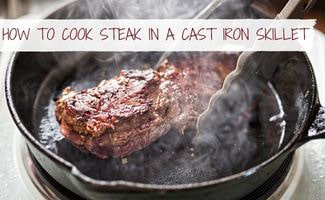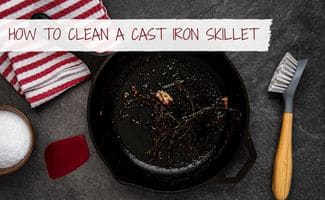When you purchase through links on our site, we may earn a commission. Here’s how it works.

View The Whole30 Guide on Amazon
Whole 30 as a Religious Experience

Shopping List for My Whole 30 Meal Plan
A huge part of starting Whole30 truly is preparing your mind, but shopping also plays a big role. You can’t just buy produce and meat and call it a day. You have to look at every ingredient and really plan meals, not just individual items. I’m already a big label reader before I buy something because we cut out corn syrup from products we buy a while ago. (You’ll be hard pressed to find a bottled barbecue sauce that tastes decent without corn syrup in it. Good thing it’s easy to make your own!). I decided the best way to do it (especially since I live far away from really good grocery stores and knew products would be limited) was to make a meal plan. I only did dinner, but when I do it again (and I think I will), I will probably plan lunches because I found lunches to be the hardest to come up with something substantial enough to get me through until dinner time. I did need to order a few items like fish sauce and coconut aminos (I love Asian food and both of these items were in many of the recipes that looked tasty to me) through Amazon.
Other items I found at several different grocery stores. I found compliant deli meat without preservatives at Kroger (Simple Truth brand), some sausages at Publix, sugar-free bacon and the cheapest organic produce (albeit limited selection) at Walmart and sugar-free almond butter (Woodstock brand) at Food Lion. It took some work, but we were ready to go. A few meals really disappointed, but most were tasty and honestly didn’t require a huge amount of work. Some became staples in our house. The only food I truly got sick of was eggs. Breakfast and lunch were harder than dinner, so we ate a lot of eggs the first 2.5-3 weeks. By the last week, I didn’t really care if I never saw another egg (I got over this!).
The Good and the Really, Really Bad
I knew this change wasn’t going to be easy. I read a lot and asked around to find a suggestion to help with the energy lulls that happen during sugar detox. The answer was to take a B-Complex supplement. Because I had cut back on sugar a lot for a month or so before starting, the sugar detox wasn’t really that bad. We had tried Whole30 before, so I knew the sugar withdrawal headaches could be bad, but I’ve given up caffeine before for pregnancies (and Whole30 doesn’t require you to give up caffeine, but in my opinion, caffeinated drinks without sugar aren’t really worth it, so I gave up coffee and had minimal tea), and I do feel the caffeine headaches are much worse and harder to get under control.
The number one downside is the exhaustion. While your body is getting used to no sugar and less “junk”, in general, you will feel pretty terrible. You will likely see your bloat disappear (presumably from no gluten or dairy, but that may just be my body’s triggers) and sleep probably will get better, you will have very little energy to move from the couch. I took up running in the last year and the first week, even with the B vitamins, I had no energy to run. None. Zero. I really didn’t want to get up off of the couch. This usually passes around day 8-10. If you can make it past this period, you are golden.
Many people who give up, give up during the first week because it is very hard to push through. Once you detox, you will notice the food definitely fuels you, but you do still sleep really well at night. Your digestion will be different, but not in a bad way. By the end, if you stick it out, cravings will be gone, you will likely have lost weight, clothes will certainly fit better and you will mentally feel clearer.
Life After Whole30 – Now What?
After the 30 days, the first thing to do is reflect on the good and the bad, for you. Most people see at least some of the benefits. I lost weight and definitely felt like I came away with a better understanding of my body, which became even more apparent as I reintroduced foods. The official Whole30 website has a protocol for reintroducing foods. It says to start with legumes (beans, beans, the musical fruit…!). I don’t like beans or really even peanuts, so this didn’t make sense for me. But, I did do one food at a time in order to tell which foods were triggers for me.
Dairy and I Have Never Gotten Along
Dairy was always a food I knew bothered my stomach. I decided not to even add much dairy back into my diet at all. I avoid dairy in products I buy and don’t eat cheese except on the occasional pizza splurge. I’ve occasionally missed it (mostly on burgers!), but not enough to go through the upset stomach.
But Gluten? Who Knew?!?
The food I added back in that I find causes me a great deal of digestive pain and bloating is wheat products! I had no idea. I’ve been eating wheat/gluten my entire life and never thought it bothered me, but it most definitely does. The jury is out on whether it is the pesticides and farming practices that cause us so much pain (literally) because I’m pretty certain it’s not actual celiac disease (or anything close), but it definitely doesn’t agree with me, no matter what the reason. Basically, as you reintroduce foods, pay attention to how your body responds and decide what’s worth it to you to put back into your diet. I haven’t given up gluten yet (but I have cut back) because it’s not terrible. I just don’t feel optimal when I eat it.
Back to Basics
All in all, it was a very hard exercise in self-control, but it was a great experience that I will probably do again at some point (if old habits start to creep back). I found several great new recipes that I can feel good about making for my family. It’s something I’d definitely recommend to someone who wants a lifestyle change that is best for his/her own individual body because it really puts you “back to basics” and then reintroduces things one at a time so that you can figure out your triggers for fatigue, skin break outs, poor sleep, digestive issues and more.
Still Confused About Whole30?
This video helps explain in more detail what the Whole 30 meal plan is.
https://www.youtube.com/watch?v=hlnRBS2mtrk
Have you done the Whole 30 meal plan?
Tagged With: Cooking, Recipes

